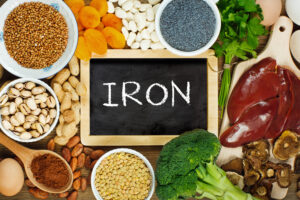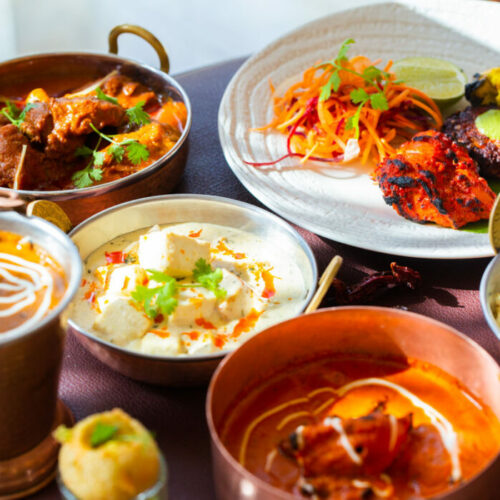The essential role of iron
 Iron is a vital mineral that plays an enormous role in the growth, development and overall energy and health of children.
Iron is a vital mineral that plays an enormous role in the growth, development and overall energy and health of children.
Making sure children are getting all the vitamins, minerals and nutrients they need to flourish can be a full-time job! In this article, we focus on iron, a key nutrient that has significant consequences on our wellbeing. Let’s delve into why iron is such a vital component in the development, energy and vitality of little ones.
Understanding iron’s importance
Iron isn’t just another mineral; it’s a superhero in the world of nutrition for children. Here are some of the reasons why:
Oxygen transport
Iron is a component of haemoglobin, the protein in red blood cells that carries oxygen from the lungs to the rest of the body. In other words, iron helps oxygen travel from the lungs to every corner of your child’s body. Adequate iron intake ensures that children have enough haemoglobin to do this properly so their energy levels soar and their overall health is strong.
Brain development
Iron isn’t just about muscles; it’s also a brain booster! It aids in creating neurotransmitters and enzymes that are like little messengers for cognitive processes, learning and memory.
Immune function
Iron fortifies your child’s immune system, keeping them hale and hearty! It supports the production and function of immune cells, helping kids fight off infections and illnesses.
Energy metabolism
Think of iron as the spark plug for your child’s energy levels. It helps convert food into fuel, powering their growth, development and appetite for physical activities.
Preventing anaemia
Iron deficiency, or anaemia, is like a villain lurking in the shadows. It’s a condition characterised by low levels of haemoglobin in the blood and the symptoms can be all too easy to chalk up to other reasons. It can cause fatigue, weakness, pale skin and even impair cognitive function in children. Adequate iron intake is the best route to protect your little ones from anaemia!
Babies (0-1 Years old)
For infants who are exclusively breastfed, iron-fortified infant cereals or iron supplements may be recommended, as the iron stores obtained from birth are depleted by around six months of age. Make sure to consult your doctor before starting any supplementation.
Toddlers (1-3 Years old)
During the toddler years, rapid growth and brain development place increased demands on a child’s nutritional intake, including iron. An essential part of a balanced diet, inadequate iron intake during this critical period can lead to developmental delays, cognitive impairment and increased susceptibility to infections.
Effects of deficiency in toddlers:
- Fatigue and irritability
- Delayed cognitive development
- Decreased appetite
- Increased risk of infections
- Impaired motor skills
Good sources of iron for toddlers:
- Lean fish and poultry
- Iron-fortified cereals
- Beans and lentils
- Dark green leafy vegetables like spinach and kale
- Fortified bread and pasta
- Dried fruits such as apricots and raisins
Incorporating these iron-rich foods into toddler-friendly meals can make a huge difference to your little one’s iron intake, helping them to blossom into a healthy, sturdy child.
Early Childhood (4-8 Years old)
As toddlers transition into early childhood, iron continues to be their steadfast companion. Their needs remain high to support gaining height and weight, as well as neurological growth. At this stage, establishing healthy eating habits with iron-rich options is the focus, so little ones have the energy to conquer the world, one playground at a time.
Effects of deficiency in early childhood:
- Reduced attention span and poor concentration
- Decreased academic performance
- Weakened immune system
- Pale skin and fatigue
- Delayed physical growth
Good sources of iron for early childhood:
- Lean meats and poultry
- Fish and seafood
- Iron-fortified breakfast cereals
- Beans, lentils and chickpeas
- Nuts and seeds
- An expanded variety of fortified grains
Encouraging children to explore a variety of foods, and incorporating iron-rich options into their meals and snacks can help prevent deficiencies, and keep their growing body nourished and well!
Middle Childhood (9-13 Years old)
During middle childhood, children should experience a period of steady growth and increased activity. Usually at this point, they will take up sports, have a longer school day and grapple with a bigger mental workload. In the midst of growth spurts and increased activities, iron becomes kids’ secret weapon for vitality and is even more necessary in this phase of discovery and changing physical demands.
Effects of deficiency in middle childhood:
- Delayed puberty
- Impaired athletic performance
- Tiredness and weakness
- Difficulty concentrating and learning
- A compromised immune system
Good sources of iron for middle childhood:
- Red meat such as beef and lamb
- Poultry like chicken and turkey
- Fish and shellfish
- Fortified breakfast cereals
- Dark green leafy vegetables
- All legumes including beans, lentils and peas
Encouraging your children to actively participate in meal planning and preparation tends to foster a positive attitude towards healthy eating and, with a little bit of education about the importance of iron, you may also be able to encourage them to snack on a variety of iron-rich foods of their own accord.
Adolescence (14-16 Years old)
As children enter adolescence, rapid growth spurts and hormonal changes make their nutritional intake especially significant, and this includes iron. As at every stage, the overall wellbeing of your teen will be hugely enhanced by iron, supporting their bodies and brains as they embark on the journey towards adulthood.
Effects of deficiency in teens:
- Fatigue and lethargy
- Poor academic performance
- Mood swings and irritability
- Delayed growth and development
- Increased risk of anaemia
Good sources of iron for teens:
- Lean red meat
- Poultry and seafood
- Iron-fortified cereals and grains
- Beans, lentils, and tofu
- Nuts and seeds
- Dark chocolate and dried fruits
Encouraging adolescents to make nutritious food choices and emphasising the importance of a balanced diet can help set them up to meet their iron needs during this incredibly taxing stage of physical and mental development.
Family meals: What to consider
Incorporating iron-rich foods into your family’s meals is an excellent way to ensure children of all ages receive the right amount of this vital mineral. Here are some simple tips to keep in mind as you approach your household’s shared meals.
Plan for balance
Mealtime can be a grand adventure where iron-rich foods take centre stage, with a little advance planning! The best thing a parent can do to help kids avoid anaemia is to create a meal plan for the week or month that includes a variety of iron-rich foods from different food groups. When in doubt, focus on lean meats, poultry, fish, legumes, whole grains, fruits and vegetables.
Get creative!
It can keep things fresh and fun for everyone if you’re willing to experiment with different cooking methods and recipes to make iron-rich foods more appealing to children. Try grilling, roasting, stir-frying or incorporating them into soups, stews and casseroles.
Iron-fortified foods
When doing the grocery shopping, look for iron-fortified cereals, bread, pasta and other grain products for an easy replacement that passively raises your family’s iron intake. This is a great method if you have any picky eaters in your home, who may be reluctant to consume other iron-rich foods.
Nutritious snacks
Another simple tactic for keeping iron at the fore of your children’s diet is to keep a variety of iron-rich snacks on hand, such as nuts, seeds, dried fruits and whole grain crackers. This way, little ones get enough iron and end up eating healthy snacks at the same time – a win-win!
Iron plays a crucial role in a child’s diet, from toddlerhood all the way through the teenage years, forming a cornerstone of a healthy body and mind. Deficiencies in iron can have significant consequences on kids’ physical and cognitive health, but by implementing these tips, you should have no problem keeping your little ones hale and hearty!
Image Credit: Shutterstock











Comments